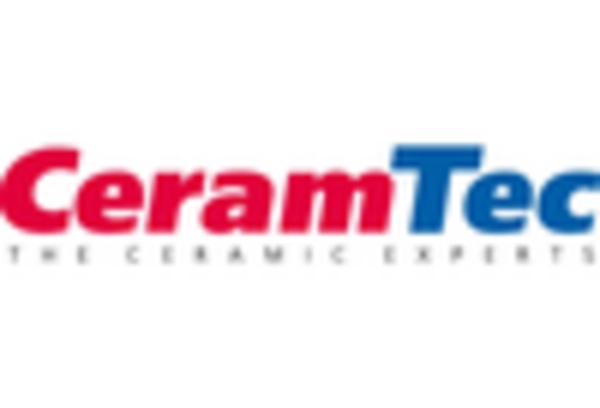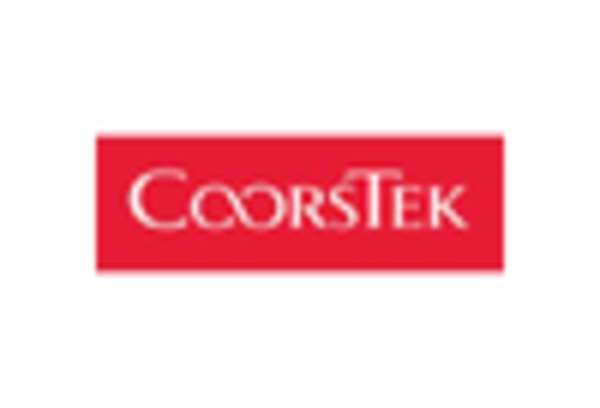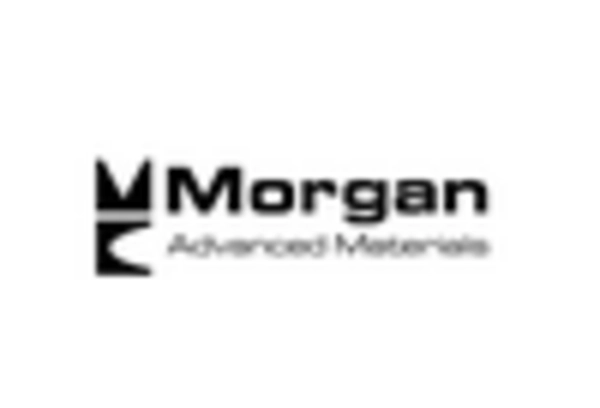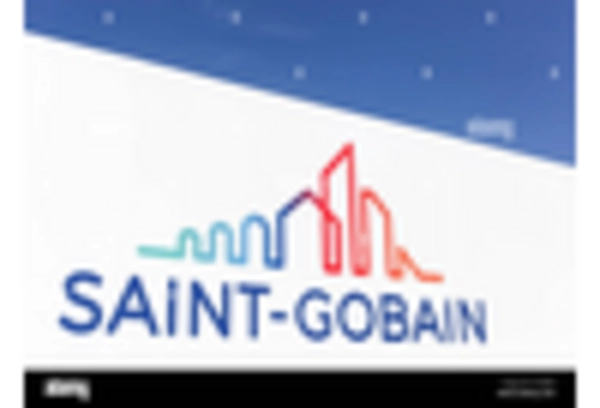Growing Automotive Sector
The automotive sector is increasingly recognizing the benefits of high-temperature ceramics, particularly in the context of electric vehicles and advanced combustion engines. These materials offer superior thermal resistance and lightweight properties, making them suitable for components such as exhaust systems and engine parts. The High-Temperature Ceramic Market is expected to experience growth as automotive manufacturers seek to enhance vehicle performance and efficiency. With the automotive industry projected to grow at a rate of around 3% annually, the demand for high-temperature ceramics is likely to rise in tandem. This trend is further supported by the shift towards electric vehicles, where high-temperature ceramics can play a crucial role in battery management systems and thermal insulation.
Rising Demand in Aerospace Sector
The aerospace sector is experiencing a notable increase in demand for high-temperature ceramics, primarily due to their exceptional thermal stability and lightweight properties. These materials are essential in the manufacturing of components such as turbine blades and thermal protection systems. The High-Temperature Ceramic Market is projected to benefit from this trend, as the aerospace industry is expected to grow at a compound annual growth rate of approximately 4.5% over the next few years. This growth is driven by the need for more fuel-efficient and high-performance aircraft, which in turn increases the demand for advanced materials like high-temperature ceramics. As aerospace manufacturers seek to enhance performance and reduce weight, the adoption of high-temperature ceramics is likely to expand, thereby propelling the market forward.
Emerging Applications in Electronics
The electronics industry is witnessing a surge in the use of high-temperature ceramics, driven by the need for materials that can withstand extreme conditions in various applications. These ceramics are increasingly utilized in components such as insulators, substrates, and capacitors, where their thermal stability and electrical insulation properties are paramount. The High-Temperature Ceramic Market is likely to benefit from this trend, as the demand for reliable and durable electronic components continues to grow. With the electronics market projected to expand at a compound annual growth rate of approximately 5% over the next few years, the adoption of high-temperature ceramics is expected to increase, particularly in sectors such as telecommunications and consumer electronics.
Increasing Focus on Energy Efficiency
Energy efficiency is becoming a critical focus across various industries, leading to a heightened interest in high-temperature ceramics. These materials are known for their ability to withstand extreme temperatures while maintaining structural integrity, making them ideal for applications in energy generation and storage. The High-Temperature Ceramic Market is poised to benefit from this trend, as industries such as power generation and automotive increasingly adopt these materials to improve energy efficiency. For instance, high-temperature ceramics are utilized in gas turbines and fuel cells, where they contribute to enhanced performance and reduced emissions. The market is expected to witness a surge in demand as companies strive to meet regulatory standards and consumer expectations for energy-efficient solutions.
Advancements in Manufacturing Techniques
Recent advancements in manufacturing techniques are significantly influencing the High-Temperature Ceramic Market. Innovations such as additive manufacturing and advanced sintering processes are enabling the production of complex geometries and improved material properties. These developments allow for the creation of high-performance ceramics that can withstand extreme conditions, thus expanding their applicability across various sectors. The market is likely to see an increase in the adoption of these advanced manufacturing methods, which can lead to cost reductions and enhanced product performance. As industries continue to seek innovative solutions, the ability to produce high-temperature ceramics with superior characteristics will likely drive market growth and open new avenues for application.


















Leave a Comment